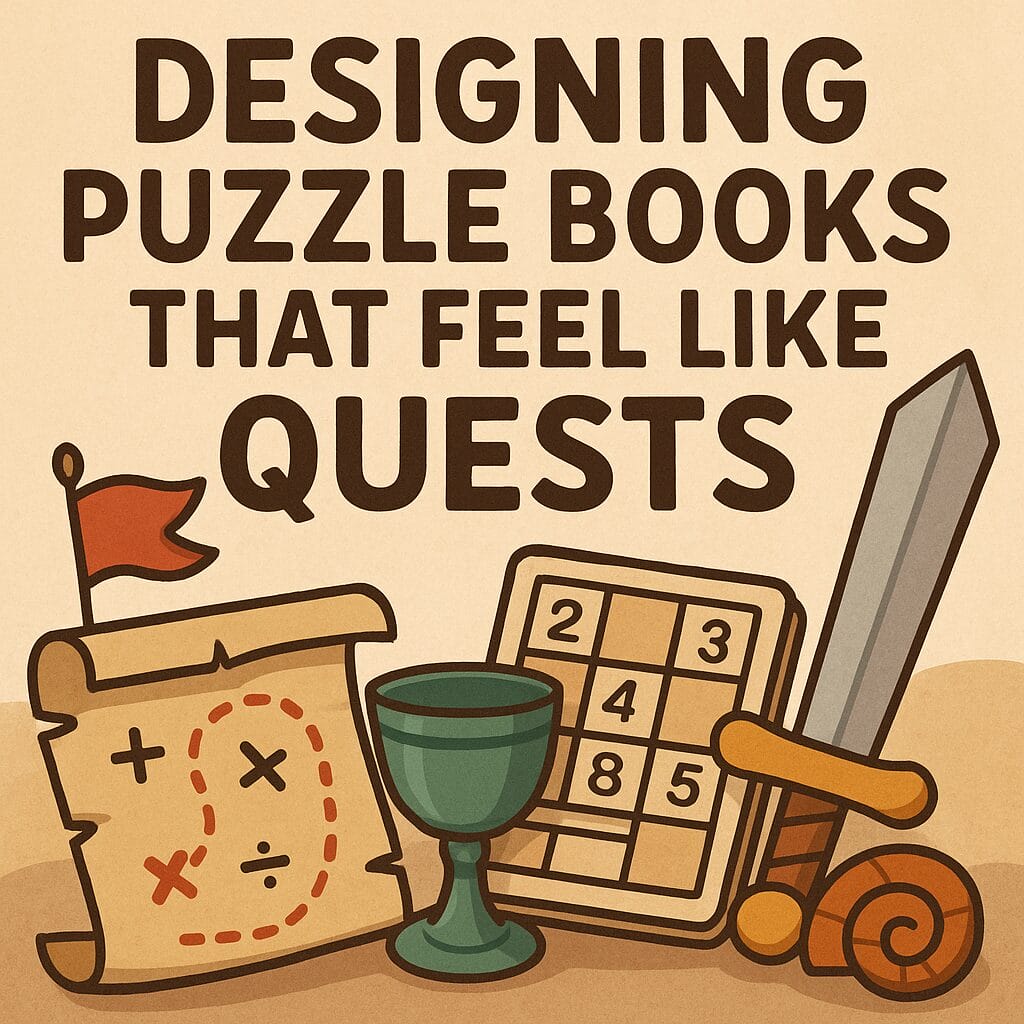Designing Puzzle Books That Feel Like Quests, Not Worksheets
Tired of Puzzle Books That Feel Like Tests?
If your puzzles feel like chores — your readers won’t come back.
Nobody wants to feel like they’re solving worksheets.
They want to feel like they’re solving something that matters.
That’s why the best puzzles don’t just challenge — they immerse.
They create a sense of adventure.
Let’s turn your next puzzle book into a quest.
What Makes a Puzzle Feel Like a Quest?
Think about what makes people finish escape rooms, binge games, or obsess over mystery novels.
It’s not just difficulty.
It’s story, structure, and stakes.
Here’s what makes puzzle books feel like a journey:
- Each puzzle builds on the last
- There’s a goal beyond just “solve this”
- There are clues, callbacks, or layers
- The player feels like they’re progressing
How to Add a Narrative Arc to Your Puzzle Book
You don’t need fantasy maps or dragons.
Just structure and a reason to turn the page.
Try these:
1. Introduce a Goal Early
Give solvers a mission: “Can you collect all four keycodes to unlock the final chamber?”
2. Use Puzzle Results as Clues
Let earlier answers become tools for later puzzles. That’s how Chain Mode works:
- Puzzle 1: Result = 17
- Puzzle 2: Begins with “17 + ? = ___”
3. Build to a Boss Puzzle
Add a final challenge that uses past results — like a locked door needing codes from pages 3, 5, and 8.
That structure makes each solve feel earned.
Design Elements That Enhance the Adventure Feel
- Themed Symbols (e.g. ancient scrolls, digital keys, maps)
- Sections or Chapters (e.g. “Chapter 1: The Maze Forest”)
- Progress Markers (e.g. checkboxes, item collections)
- Foreshadowing or Hints (“You’ll need this later!”)
These create rhythm and momentum — without needing actual story text.
Who Benefits From Quest-Style Puzzles?
🧠 Teachers: More engaging logic challenges and layered math sheets.
📬 Subscription Boxes: Turn 5 puzzles into an unfolding narrative.
📚 Puzzle Authors: Stand out in a saturated market.
🧩 Solvers: Feel like they’re on a mission, not a quiz.
Real-Life Example: Math Mazes as a Quest
Instead of a flat sequence of equations:
- Frame each Math Maze as a zone: “The Addition Caves,” “The Subtraction Swamp.”
- The result from one maze unlocks a door in the next.
- Final Boss Maze requires results from all previous paths.
Readers now feel like they’re exploring — not just calculating.
Your Next Step: Turn Your Puzzles Into Progress
Take a set of 5 puzzles you’ve already made.
- Give each one a name or location.
- Use results to influence the next step.
- Add a final puzzle that uses everything so far.
That’s it. You now have a quest.
And your readers won’t want to stop halfway through.
Further Reading
- The Secret to Getting Solvers to Come Back Tomorrow
- What Puzzle Books Can Learn from the Most Addictive Game Apps
- How to Design Puzzle Books That Actually Stick the Landing
Explore the Meta Puzzle Tools
Ready to build your own chain puzzles or boss-level challenges?

